Are you looking for a simple way to add a burst of lemon flavor to your edible creations? Search no more, as the solution lies with this simple two-ingredient lemon sugar. This easy-to-make ingredient is perfect for adding a tangy twist to everything from cakes and cookies to your favorite drinks.
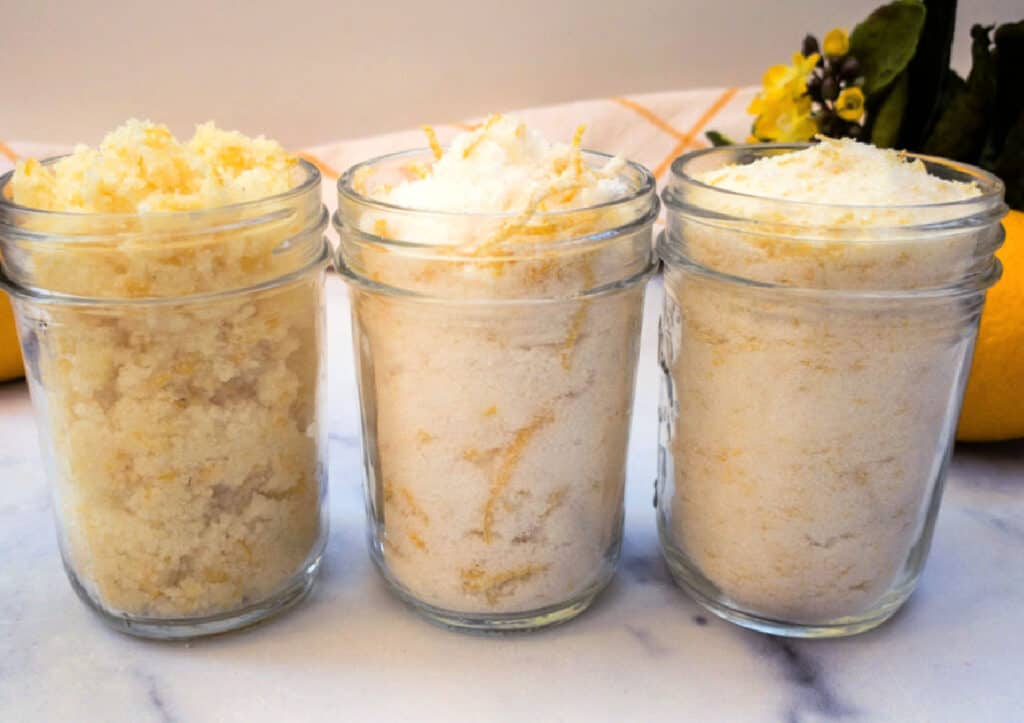
Making lemon sugar is simple and only requires two ingredients to make: lemon zest and granulated sugar. Simply rubbing the two ingredients together until the sugar is infused with the oils from the lemon zest results in a lemony-colored and very fragrant sugar you can add to your favorite recipes for a burst of citrusy flavor. You can even store the sugar to use later.
“I love to garnish lemon cocktails with a lemon sugar rim. The tart lemon adds extra zesty flavor and balances the sweet sugar. Lemon sugar is especially great on the rim of lemon drop martinis and lemon margaritas.”
— Susannah Brinkley Henry, Feast + West
The two ingredients
You will be amazed at the flavor of just two ingredients.
Lemons
The citrusy flavor of lemons lends a bright and acidic taste to food and drinks, perfect for enhancing sweet and savory dishes.
When you zest a lemon, the essential oils and flavors in the peel are released. A citrus zester or vegetable peeler can be used to remove the lemon zest. Be sure to remove only the colored part of the peel and avoid the white pith, which can be bitter.
Sugar
Sugar is the other main ingredient in lemon sugar. The sugar can be granulated sugar or caster sugar, which is a more finely ground sugar. The sugar absorbs the essential oil and flavor from the lemon zest creating a sweet and tangy sugar.
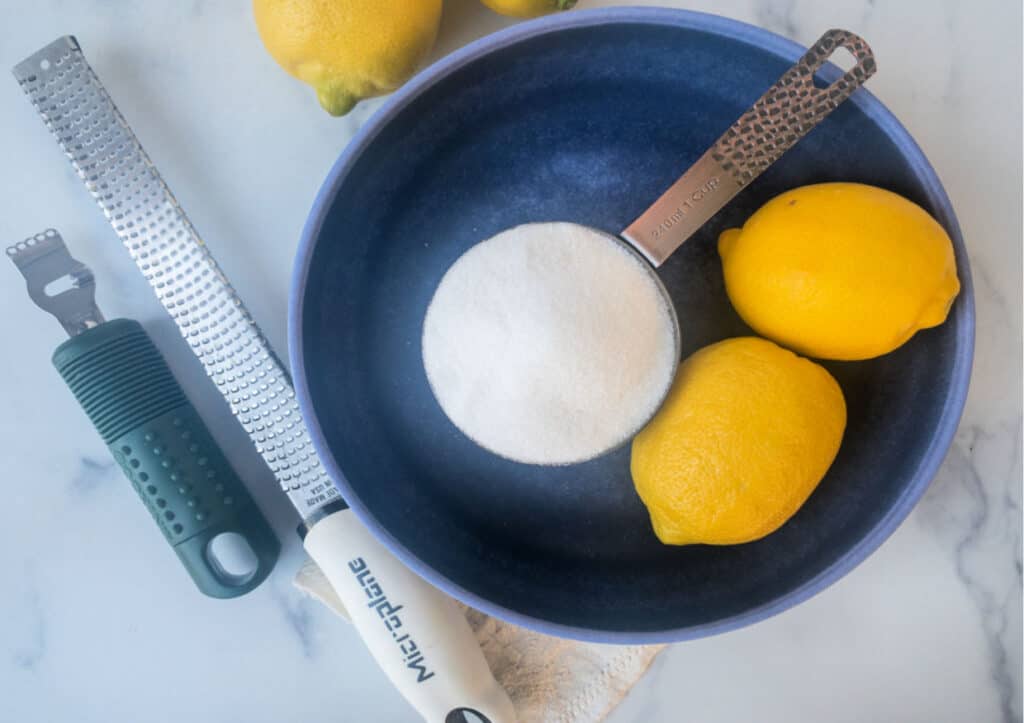
The best ratio to use
It is important to use the right ratio of lemon zest to sugar. Using too much sugar will hide the lemon flavor, while too little sugar can make the mixture too tart. Try using about one cup of sugar for every two lemons for the best results. Expect a medium-sized lemon to yield about one tablespoon of zest.
“I love baking with lemon sugar, and I always have a jar of it all the time. I simply replace granulated sugar in lemon recipes with lemon sugar for a delightful burst of lemon flavor. Use it next time you make lemon muffins, lemon cupcakes or lemon cakes.”
— Jolina, The Unlikely Baker
FDL’S 75 Best Bites

Our cookbook with 75 tasty recipes will be your go-to kitchen companion for easy dinners with ad-free recipes right at your fingertips. Crafted by experienced chefs and recipe developers, this collection offers a treasure trove of tried-and-true dishes that make mealtime a breeze.
Get the Recipe: FDL’S 75 Best Bites
Preparing the lemons
These are all the simple steps that will bring out the best citrus flavor.
Choose the best lemons
Fresh is always best; look for bright yellow, firm lemons. Any lemons that are wrinkled or have soft skin will have less oil and fragrance and are probably old. This is the time choosing organic lemons is a good idea so they are free of chemicals and pesticides.
Cleaning the lemons
Since most lemons are covered in wax, simply pour boiling water over the lemon, then rinse under cold running water and use a soft brush to remove any debris. Dry the lemons with a clean cloth before zesting.
Zesting the lemons
Zesting is a simple process of removing the yellow layer of the lemon that is cut or grated into very fine pieces. This layer contains oil and flavor. There are several tools to zest a lemon, depending on the size of the zest you need for your recipe.
- A long Microplane is the easiest tool to use. The serrated edges are very sharp, and cut the lemon peel into a fine zest.
- A citrus zester has small holes at the top that you drag down through the lemon peel to make long, thin strips.
- If using a box grater, use the side with the smaller holes for the best results.
Here’s a tip, once you zest the lemons go ahead and juice them for lemon water.
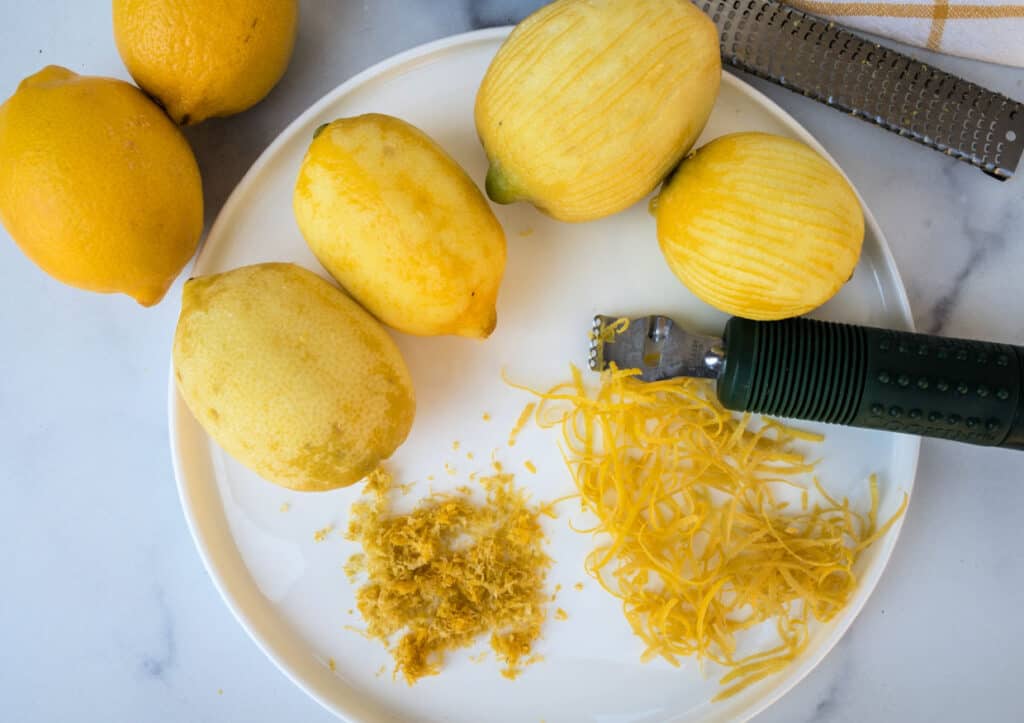
Making lemon sugar
There are two ways to make this homemade sugar, and both are easy.
By hand
To make the sugar by hand, add one cup of sugar to a bowl and add the zest of two lemons or about two tablespoons. Thoroughly blend the sugar and the lemon zest by gently combining the two ingredients, making sure every grain of sugar is coated with the aromatic lemon oils. By rubbing the mixture between your fingertips, the fragrance will be released, and the sugar will turn yellow.
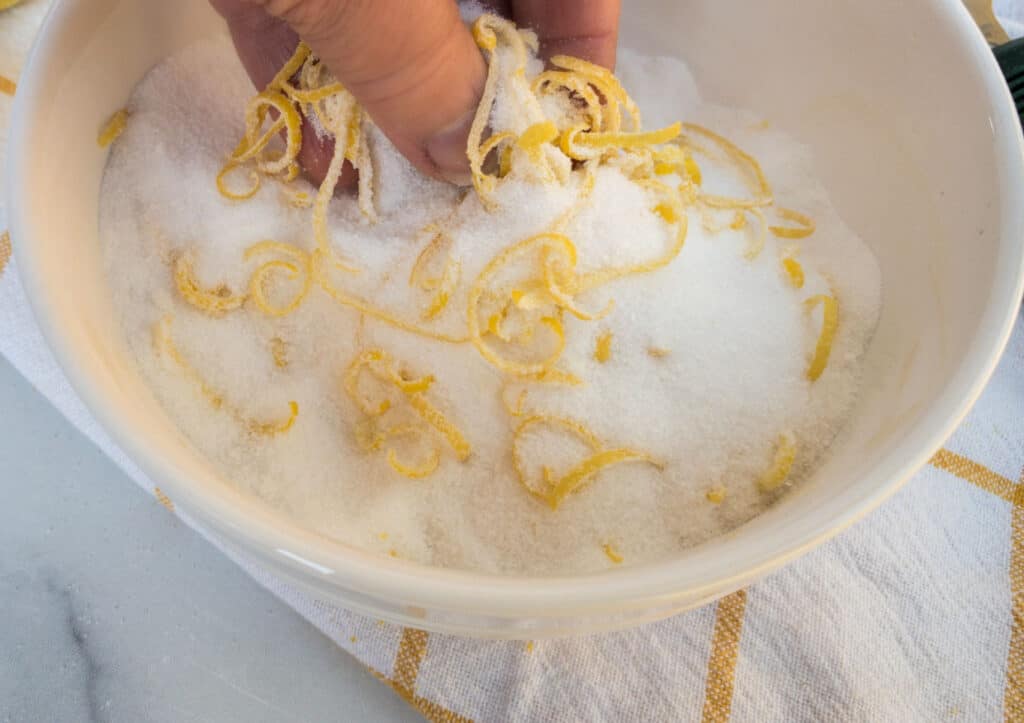
With a food processor
Use a small food processor and add the sugar and the zest, then pulse a few times until incorporated. This method will make more of a powdery mixture.
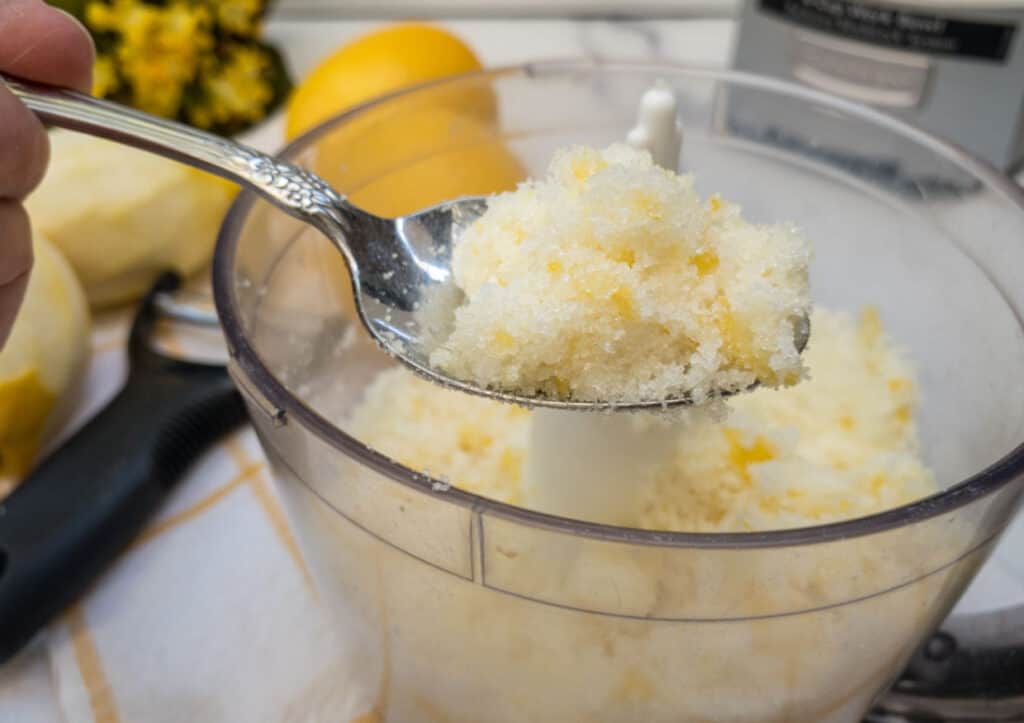
“We have a lemon tree that produces hundreds of lemons each year, so I am always looking for creative ways to use them! Lemon sugar is a great way to add extra lemon flavor to baked goods. I love using it in recipes like my lemon blueberry muffins or lemon cupcakes!”
— Madison Wetherill, Joyfully Mad
Storage
If you are not using the sugar immediately, place it in an airtight container.
Lemon sugar does not need to be refrigerated; however, storing it away from direct sunlight in a cool, dry place will maintain its quality. If you live in a hot and humid area, it’s best to refrigerate it to prevent the sugar from getting sticky and clumping together.
You can also freeze the sugar for up to six months in an airtight container.
Variations
Not only can you mix lemon zest and sugar, but you can use other citrus fruits like in this Mandarin Orange Bundt Cake. Limes, oranges, and grapefruit will also make flavorful sugars.
Uses for lemon sugar
The list can be endless, and once you start using this fragrant sugar, you will find even more uses.
- Give a fruit salad a burst of citrusy sweetness.
- Use in place of regular sugar in lemon-scented recipes for extra lemon flavor.
- Use in baked goods like cakes and cookies.
- Rim a cocktail glass with lemon sugar.
- Add to lemonade instead of just using sugar.
- Add to the top of a quickbread or scones before baking for a sweet, crunchy topping.
- Make a body scrub by mixing lemon sugar with coconut oil.
Lemon sugar makes a versatile and flavorful addition to any kitchen. Its refreshing and tangy citrus flavor brightens all types of sweet and savory recipes and beverages.
Jere Cassidy is the writer and recipe developer behind the blog One Hot Oven. A passion for all things food-related led her to culinary school to expand on her baking skills and now to sharing easy recipes for all home cooks and bakers of all skill levels. When not in the kitchen, Jere’ likes to travel far and wide to find delicious food.